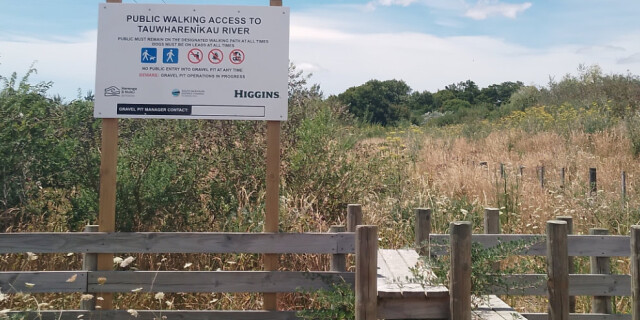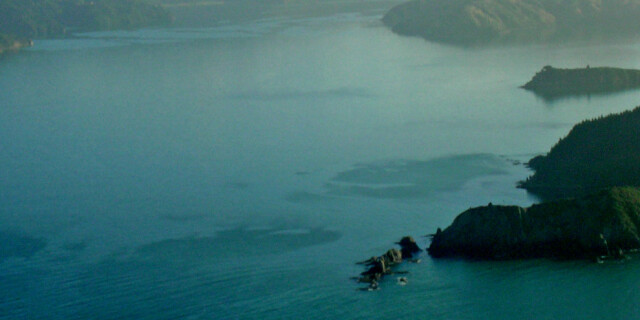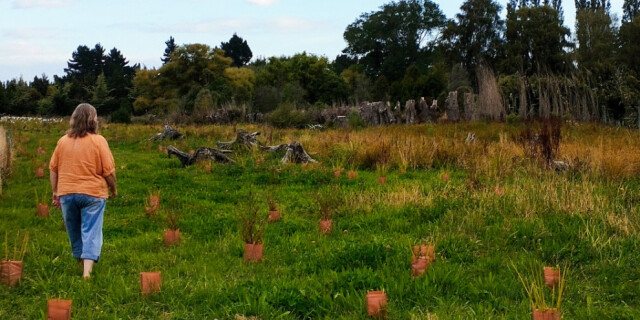The Overseas Investment Office and public access
Contents
- Introduction
- Statutory provisions
- Herenga ā Nuku's process
- Herenga ā Nuku's criteria
- Legal mechanisms for walking access
Introduction
This is a guide to the statutory provisions, processes and criteria Herenga ā Nuku has used when addressing walking access benefits that overseas investors of sensitive land may offer as a benefit of their investment. The Overseas Investment Office (OIO) and responsible ministers have previously considered these public access benefits when assessing whether to approve applications to purchase sensitive land under the Overseas Investment Act 2005 (OIA).
Herenga ā Nuku has no statutory role under the Overseas Investment Act in advising on or determining these walking access benefits. Herenga ā Nuku has, however, a role under the Walking Access Act 2008 to lead and support the establishment and improvement of walking access. The OIO has recognised this role and sought Herenga ā Nuku’s advice when needed on possible walking access benefits relating to OIA applications. However, decisions on OIA applications are a matter for the OIO and the responsible ministers.
Statutory provisions
Walking Access Act 2008
The most relevant provisions of the Walking Access Act relating to OIO processes are:
9 Objective of Commission
The objective of the Commission is to lead and support the negotiation, establishment, maintenance, and improvement of walking access and types of access that may be associated with walking access, such as access with firearms, dogs, bicycles, or motor vehicles.
10 Functions of the Commission
(1) In meeting its objective under section 9, the Commission has the following functions:
(a) providing national leadership on walking access by—
(i) preparing and administering a national strategy; and
(ii) co-ordinating walking access among relevant stakeholders and central and local government organisations, including Sport and Recreation New Zealand.
Herenga ā Nuku is also responsible for establishing and administering walkways, a particular form of walking access recognised in the statute.
Overseas Investment Act 2005
The OIA contains several criteria that the OIO and Ministers must consider when assessing an application from an overseas person to acquire sensitive land. These include a benefit to New Zealand test. From a walking access perspective, the most relevant provisions of the benefits test are:
16A(1)(a)
(ii) the overseas investment will, or is likely to, benefit New Zealand (or any part of it or group of New Zealanders), as determined by the relevant Ministers under section 17.
The public access benefit is assessed under section 17 (Factors for assessing benefit of overseas investments in sensitive land) on whether the overseas investment will:
17(1)(c )
result in continued or enhanced access by the public, or any section of the public, within or over the sensitive land or the features giving rise to the sensitivity (for example, access for recreational purposes or for the purposes of undertaking stewardship of, or exercising kaitiakitanga in relation to, historic heritage or the natural environment)
The Minister also issues Ministerial Directives from time to time relating to the government’s policy approach to overseas investment and matters relating to the OIO's functions, powers and duties. These are made pursuant to section 34 of the OIA. The Ministerial directive issued in June 2024 instructed, among other matters, that for efficiency, only the primary benefit of each application is to be assessed by the OIO. Walking access is usually a secondary benefit of applications. As such, the OIO is not currently assessing walking access.
Herenga ā Nuku’s process
Prior to the 2024 Ministerial Directive, Herenga ā Nuku became involved in the process of the purchase of sensitive land by an overseas person either:
- When the OIO or ministers made it a condition of the acquisition that the overseas investor reaches an agreement with Herenga ā Nuku to implement a walking access condition. This may have been in the form of a standardised walking access condition developed in consultation with Herenga ā Nuku, or
- When the OIO consulted directly with Herenga ā Nuku on an application the OIO was assessing at the time, to understand any proposed or potential walking access benefits. Herenga ā Nuku provided any walking access recommendations relating to the application directly to the OIO, or
- When an intending overseas investor approached Herenga ā Nuku seeking its views on a possible walking access benefit. In this case, Herenga ā Nuku considered the matter and provided its views, which the intending overseas investor could then include in their application.
In addressing walking access conditions of approved purchases, Herenga ā Nuku, if relevant, consulted with other parties with an interest in public access, such as the Department of Conservation, local authorities, Fish and Game New Zealand and recreational groups about the desirability of walking access on the land and any implementation issues.
When addressing an approach from intended overseas investors, before the application is made to the OIO, or when consultation occurred directly with the OIO, Herenga ā Nuku treated each request in confidence and did not approach other agencies for their views without the specific agreement of the intending overseas investor.
Herenga ā Nuku's criteria
Herenga ā Nuku’s criteria in considering whether walking access would be beneficial in respect of a particular area of sensitive land that was subject to an application under the OIA was guided by the provisions in section 11 of the Walking Access Act 2008:
11 Consideration of priorities for walking access over private land
In considering its priorities for negotiating walking access over private land, the Commission must take into account the desirability of walking access—
(a) over land on the coast where there is not already walking access over the foreshore or the land adjoining the foreshore on its landward side:
(b) over land adjoining rivers or lakes where there is not already walking access over the land:
(c) to parts of the coast, rivers, or lakes to which there is not already walking access:
(d) being continuous over land adjoining the coast, rivers, or lakes (for example, by replacing walking access that has become obstructed by being submerged beneath a body of water):
(e) to conservation areas (within the meaning of section 2(1) of the Conservation Act 1987):
(f) to areas of scenic or recreational value:
(g) to sports fish (within the meaning of section 2(1) of the Conservation Act 1987) and game (within the meaning of section 2(1) of the Wildlife Act 1953).
In addition, Herenga ā Nuku considered the practical implementation of any proposed walking access and who would bear the cost of implementation. This included route marking, track formation, signage and ongoing maintenance and administration.
Legal mechanisms for walking access
If walking access was a public benefit offered by a proposed overseas investor, an appropriate legal mechanism was used to secure it. These included:
- A walkway established under the Walking Access Act 2008, usually requiring an easement over the land
- A public access easement other than one specified for a walkway
- An esplanade strip or access strip agreed upon between the landowner (purchaser) and the local territorial authority, and
- The overseas investor and the Queen Elizabeth II National Trust agreed upon an open space covenant providing public access.




